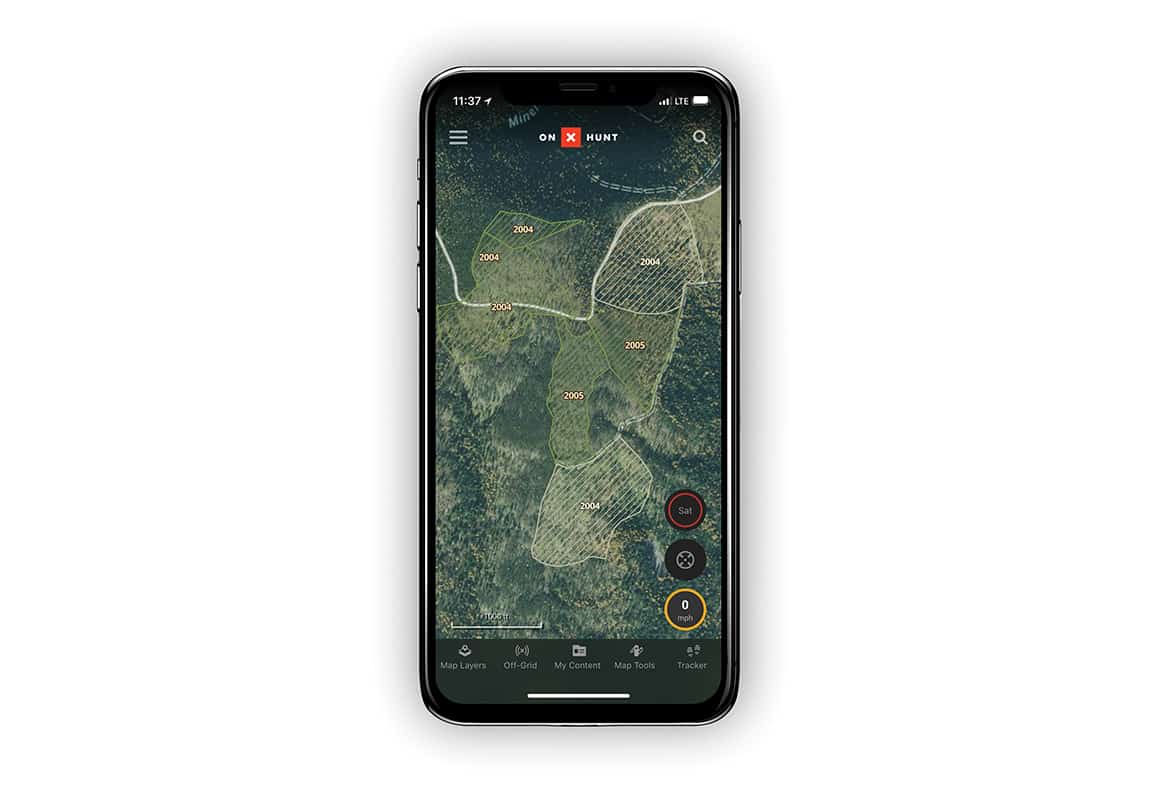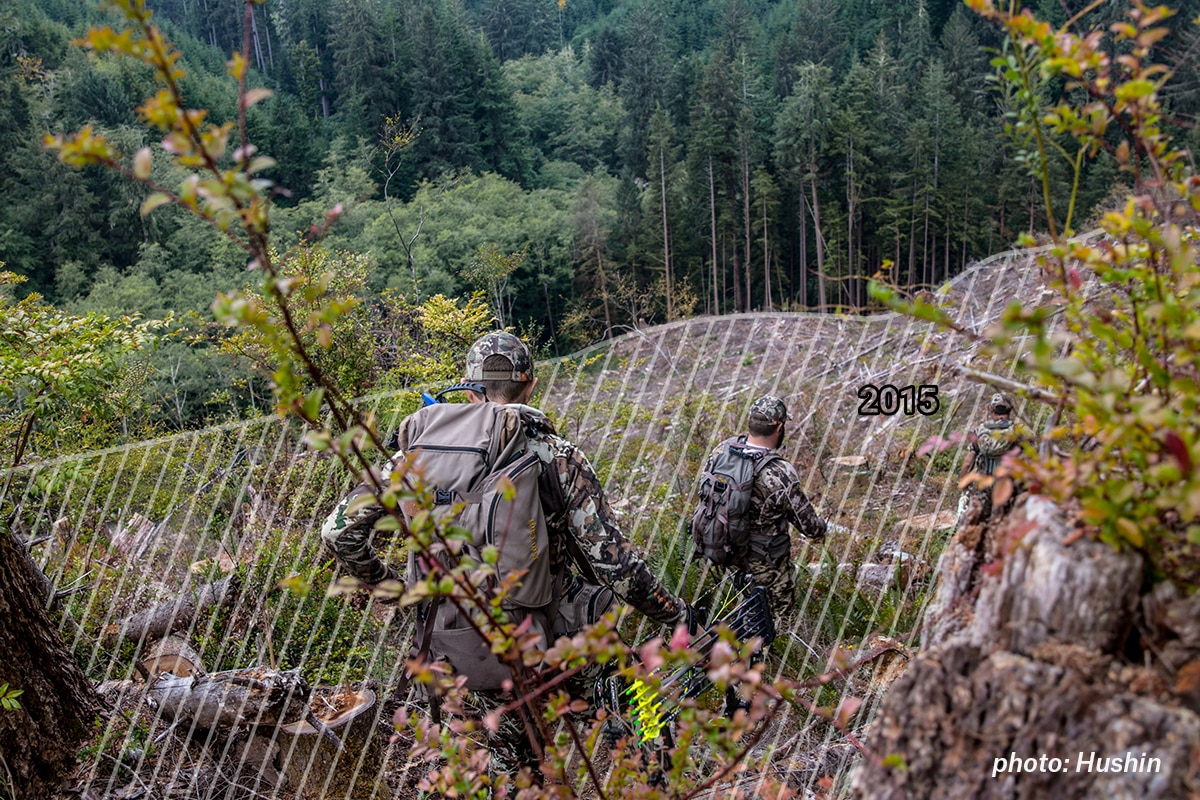Find openings and opportunities by focusing on timber cuts.
Deadfall-choked forests can be a hunter’s nightmare. Fallen trees littering the forest floor or snags hung overhead can slow down travel and make for difficult shooting lanes. Thinned and clearcut timber can be a hunter’s savior in forests ripe with dead and dying trees, and the onX Hunt Timber Cuts Layer can help find these havens.

The Timber Cuts Layer shows logging operations that took place between 2004 and 2019. Areas that have been cut will be delineated by a green (thinning cut) or white (clearcut) perimeter with diagonal lines running across. The layer also contains information on the year of the cut, the name of the project and more.
Besides being easier to move through, thinned timber has major advantages for hunters and wildlife. Modern fire suppression techniques have caused some Western forests to grow unchecked by the natural thinning created by fire. The overgrown woods produce thick canopies, preventing sunlight from providing nutrients to grasses and shrubs.

Selective logging methods are known to open forest canopies and floors, drawing in animals to feed on the new undergrowth being fed by the sunlight. This makes thinned and cut areas perfect ambush spots to find feeding ungulates, bears, turkeys and even upland birds as they graze on the new growth.
Certain species may even target a cut based on how long ago the area was harvested. For example, moose feed on the buds of new trees, so moose hunters can find how long it takes for new trees to grow in a specific area and use the year the cut was made to determine if the trees are the right age to attract moose. Elk and deer, on the other hand, may be more attracted to the new grasses, so finding recently logged areas can be more beneficial.
This year, try using the Timber Cuts Layer to identify a couple new areas to scout before the season—we think you’ll find it as useful as we have.
Updated June, 2019